Captain Cook Snorkel Tour: Explore Kealakekua Bay Today!
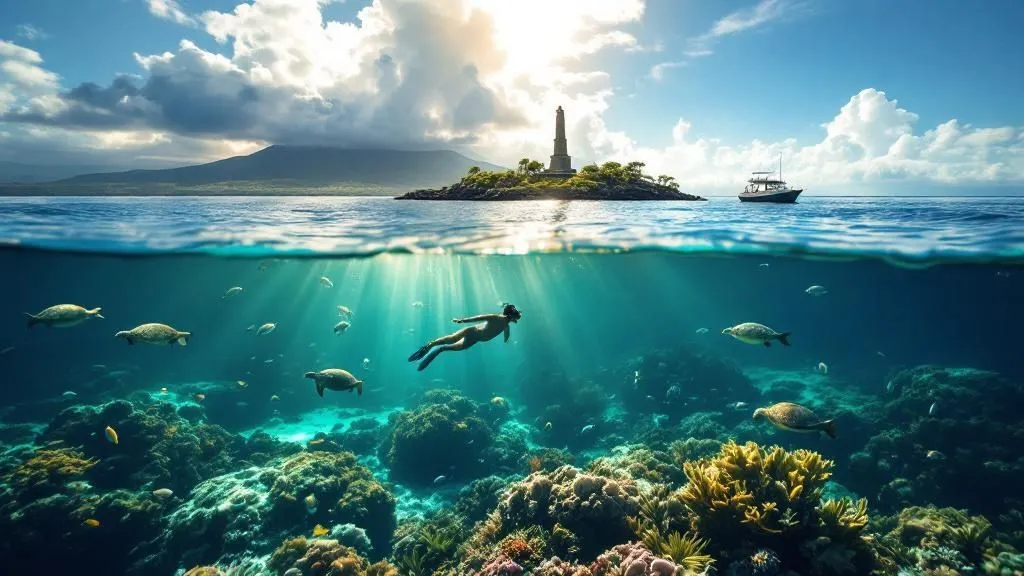
Why Captain Cook Snorkel Tours Capture Hearts Worldwide
Picture this: you're floating effortlessly above vibrant coral gardens, right in the spot where Captain James Cook’s expedition once anchored. A rainbow of tropical fish surrounds you, swimming with a gentle curiosity. This isn't just another snorkeling trip; it's a unique intersection of profound history and a thriving marine paradise, creating a memory that sticks with you long after you've dried off. So, what makes this specific bay stand out from Hawaii's many other snorkeling spots? The magic is in its special mix of world-class underwater scenery and deep cultural storytelling.
This exceptional combination is exactly why Kealakekua Bay is considered a benchmark for a meaningful Hawaiian adventure. It’s more than just a tourist activity; it’s a personal encounter with nature and the past. The bay's protected status acts as a guardian, preserving its crystal-clear waters and supporting an amazing density of marine life. This protection not only guarantees fantastic visibility but also creates a safe space where sea creatures are less shy, allowing for incredibly close and peaceful interactions.
The Irresistible Combination of History and Nature
The pull of Kealakekua Bay is undeniable, attracting over 190,000 visitors each year. This number shows just how important the bay is, not only as a natural wonder but also as a key part of Hawaii's ecotourism. Studies reveal that about 70% of these visitors choose the Captain Cook snorkel tour specifically because it beautifully ties together two powerful stories: the excitement of exploring an underwater world and the significant history that took place on its shores. You can read more about the visitor experience at KonaSnorkelTrips.com.
This dual appeal makes for a richer, more meaningful experience. You aren't just swimming over coral reefs; you're exploring a living museum where every fish and historical landmark tells a piece of a much larger story.
What Makes the Experience So Memorable?
Several key elements come together to make this tour so impactful.
- A Protected Sanctuary: Kealakekua Bay is a designated State Historical Park and Marine Life Conservation District. This special status limits boat traffic and commercial use, leading to calmer waters and healthier marine ecosystems compared to more crowded sites.
- Cultural Depth: The guides on a quality Captain Cook snorkel tour are more than just boat captains; they are storytellers. They share the history of Captain Cook's arrival, his intricate relationship with the Hawaiian people, and the site's enduring importance in Hawaiian culture.
- Accessible Beauty: The coral reefs start in fairly shallow water, making it a perfect spot for everyone from first-time snorkelers to seasoned underwater explorers. You don’t have to be a deep-sea diver to witness the incredible beauty just beneath the surface. To get a preview of what awaits, check out our guide on Big Island Captain Cook snorkeling.
Discovering Kealakekua Bay's Underwater Wonderland
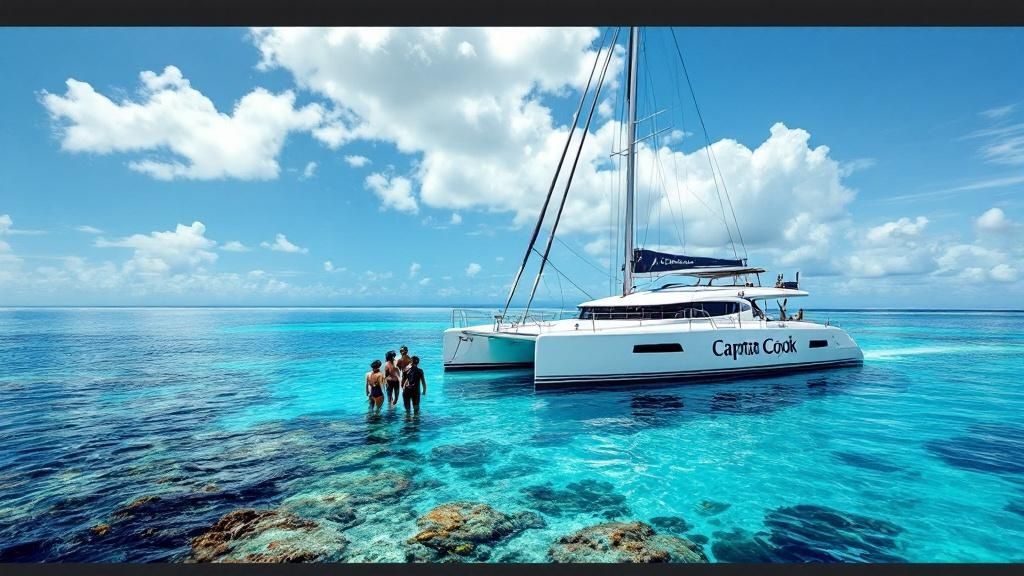
Think of Kealakekua Bay as a massive, natural aquarium, but instead of just looking through the glass, you get to jump right in. The bay is framed by sheer cliffs that act as a natural shield against the wind, creating exceptionally calm and clear water. This protected setting allows an incredible amount of marine life to thrive, from shallow coral gardens ideal for first-timers to deeper areas that attract larger ocean dwellers. A Captain Cook snorkel tour is your all-access pass to this living, breathing underwater city.
So, what’s the secret behind its pristine condition? The bay is a designated Marine Life Conservation District. This special status acts like a protective bubble, limiting boat traffic and certain activities to prevent overuse of its delicate ecosystem. The outcome is astonishingly clear water, with visibility that often reaches over 100 feet. This clarity lets sunlight reach the depths, fueling healthy coral reef growth which, in turn, supports hundreds of species of fish and other sea creatures.
Key Residents of the Bay
When you slip into the water, you're not just an observer; you're a visitor in a bustling underwater neighborhood. Here are a few of the locals you're almost certain to encounter:
- Spinner Dolphins (Nai'a): You'll often spot these acrobatic mammals in the mornings, leaping and spinning out of the water. They use the bay’s calm, protected waters as a place to rest and socialize.
- Parrotfish (Uhu): These brightly colored fish are the reef's landscapers. Listen closely and you might hear them crunching on coral, a process vital for keeping algae in check and creating the bay's fine white sand.
- Hawaiian Green Sea Turtles (Honu): Seeing one of these ancient, graceful reptiles glide by is a moment you won't forget. Spotting a Honu resting peacefully on the seafloor or coming up for a breath is a truly magical part of any snorkel tour.
To help you identify the incredible creatures you'll see, we've put together a handy spotting guide. Use this table to know what to look for and when you're most likely to see it.
| Marine Life Spotting Guide for Captain Cook Snorkel Tours | |||
|---|---|---|---|
| Marine Species | Best Time to Spot | Identification Features | Behavior Tips |
| Spinner Dolphin (Nai'a) | Early Morning | Slender body, long snout, known for acrobatic spinning leaps. | Often seen in large pods. They rest during the day, so observe from a respectful distance without pursuing them. |
| Parrotfish (Uhu) | Mid-day | Brightly colored (blues, greens, pinks), with a beak-like mouth for scraping algae off coral. | You can often hear their distinct crunching sound underwater. They are constantly on the move, "grazing" the reef. |
| Hawaiian Green Sea Turtle (Honu) | All Day | Large, dark carapace (shell) often covered in algae, with a smooth, gentle face. | Look for them gliding slowly near the reef or resting on the sandy bottom. Never touch or chase a Honu. |
| Yellow Tang (Lau'īpala) | All Day | Bright, oval-shaped yellow body with a small mouth. Often seen in large schools. | These fish are very active and create brilliant flashes of color as they dart through the coral. |
| Moorish Idol (Kihikihi) | Mid-day | Distinctive black, white, and yellow vertical bands with a long, trailing dorsal fin. | Usually seen in pairs or small groups. They are elegant swimmers but can be a bit shy. |
This guide gives you a starting point for what to expect in the bay's vibrant waters. The incredible biodiversity here is a direct result of strong conservation efforts. By choosing a responsible Captain Cook snorkel tour, you're not only getting an amazing experience but also supporting the preservation of this underwater paradise for years to come.
Understanding The Captain Cook Story And Cultural Significance
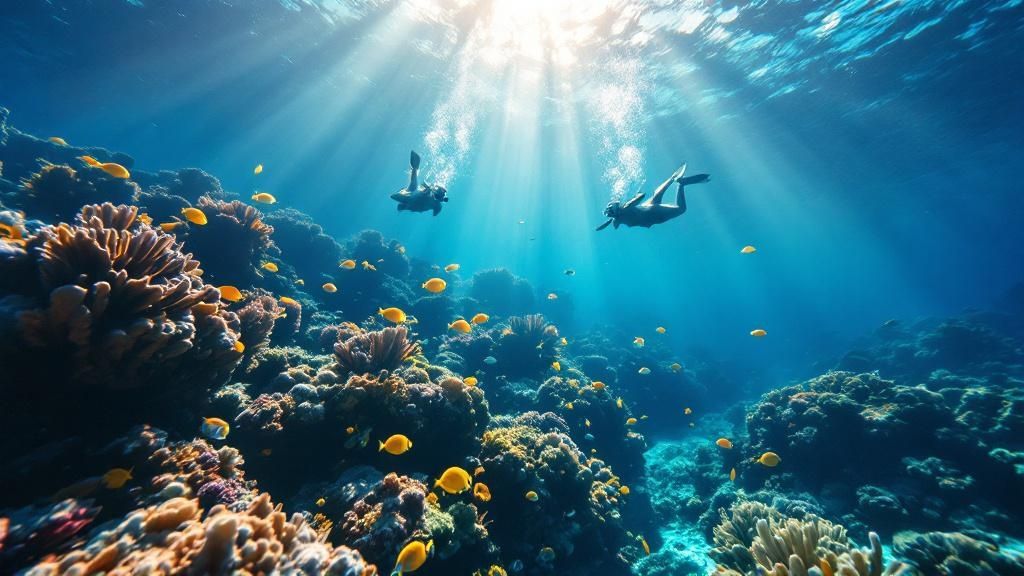
As you snorkel in Kealakekua Bay, every kick of your fins propels you through waters rich with history. That white obelisk you see on the shore—the Captain Cook Monument—is more than just a landmark. It marks a profound moment when two vastly different cultures first met, setting off a chain of events that forever changed Hawaii. A Captain Cook snorkel tour isn't just about the amazing underwater world; it’s a chance to connect with this powerful story right where it happened.
This place represents a complex and often misunderstood part of Hawaiian history, making it vital to approach with respect. When you understand the background, a simple sightseeing stop becomes a meaningful educational moment, adding a whole new layer to your adventure in the bay.
The Arrival And Its Complex Legacy
When British explorer Captain James Cook arrived in Kealakekua Bay in 1779, his timing was remarkable. He sailed in during the Makahiki festival, a sacred time dedicated to the Hawaiian god Lono. This coincidence led some to initially view him as a divine being, which created a complicated and ultimately tragic dynamic with the local people. His arrival introduced new technologies but also carried unintended consequences, including disease and the beginning of foreign influence.
The interactions, however, were not one-sided. Hawaiian society was incredibly organized, with its own advanced systems of government, religion, and land management. The circumstances that led to Cook’s death in the bay were born from deep cultural misunderstandings and rising tensions—a story far more complex than a simple battle. Today, responsible tour operators share this history with great care, honoring both the historical facts and Native Hawaiian perspectives.
The Site As A Bridge Between Past And Present
The Captain Cook Monument and the surrounding bay are deeply sacred. For Native Hawaiians, Kealakekua is a spiritual place connected to their ancestors and cultural identity. The monument itself honors the British explorer who died there, cementing its role as a pivotal site in Hawaii’s modern history. You can discover more insights about the historical significance of the Captain Cook snorkel tour on dolphindiscoveries.com to get the full picture.
Modern tours work to honor this dual importance. They act as a chance for education, helping visitors appreciate:
- The pre-contact Hawaiian culture and the importance of the Makahiki season.
- The lasting effects of Western contact on the Hawaiian Islands.
- The continuous efforts to protect both the natural environment and the cultural heritage of this sacred location.
By engaging with this history, your Captain Cook snorkel tour becomes more than a swim. It becomes a journey connecting you not only to the vibrant marine life but also to the powerful human story of Kealakekua Bay. This deeper context transforms a beautiful day on the water into a respectful trip through time.
Choosing The Right Captain Cook Tour For Your Adventure
With so many companies offering trips to Kealakekua Bay, picking the perfect Captain Cook snorkel tour can feel a bit like choosing the right hiking trail. Some are short and sweet, perfect for a casual stroll, while others are rugged, all-day treks for the serious adventurer. The best choice is the one that matches your personal style, whether you want an educational deep dive, a laid-back family day, or a trip focused on getting that perfect underwater shot.
Options range from zippy, small-group rafts that feel like a private charter to large, comfortable catamarans with all the amenities, including restrooms and shaded decks. Thinking about the differences in boat style, group size, and departure times will help you find the best fit for your day on the water.
Vessel Type and Group Size: Finding Your Fit
Your first big decision is whether you prefer a small, intimate group or a larger, more social vessel.
- Small Boats (6-16 passengers): These tours provide a more personal and adaptable experience. Captains can often get closer to unique sights like sea caves and lava tubes, and the smaller group size means more one-on-one time with your guide. This is a great setup for dedicated snorkelers, couples, or anyone looking for a quieter, more focused outing.
- Large Catamarans (20-50+ passengers): These boats offer superior stability and comfort, making them an excellent choice for families with kids, first-time snorkelers, or anyone worried about seasickness. They usually feature more amenities, like sun decks, easy-to-use stairs for getting in and out of the water, and often include lunch and drinks.
The infographic below shows the amazing variety of marine life you're likely to encounter. A good tour operator will know exactly where to find them.
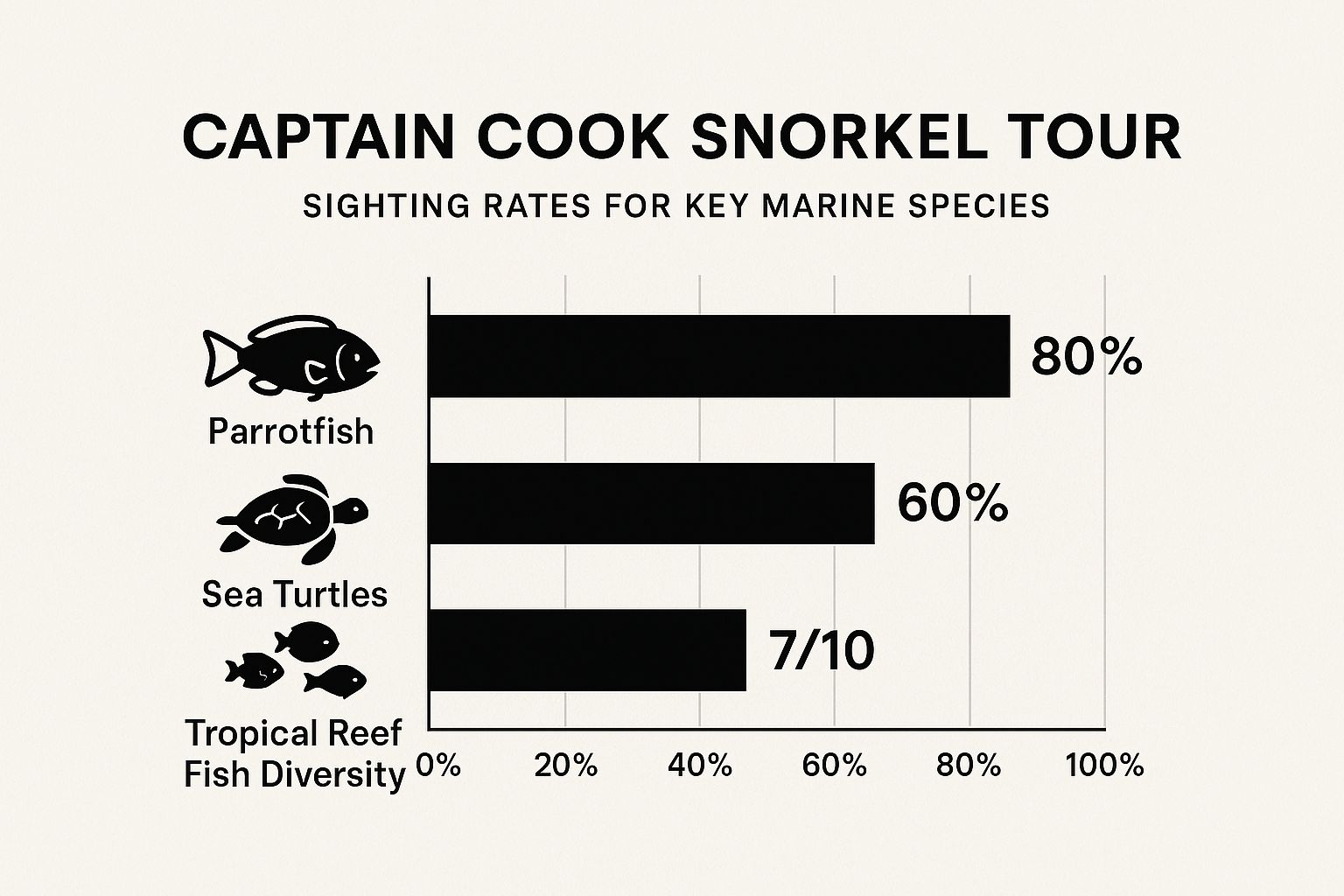
The consistently high chances of seeing key species like Parrotfish and sea turtles show just how vibrant Kealakekua Bay is, meaning almost any tour you pick will offer fantastic wildlife viewing.
Evaluating Tour Operators and Pricing
Once you've decided on a boat type, it's time to look at the companies themselves. Focus on operators who prioritize safety, respect for Hawaiian culture, and marine conservation. A company with lifeguard-certified guides and clear rules for protecting the reef is a sign of a quality operation.
To help you compare your options, here is a breakdown of some popular tour operators, what they offer, and what you can expect to pay.
| Tour Operator | Duration | Group Size | Price Range | Key Features |
|---|---|---|---|---|
| Kona Snorkel Trips | 3-4 hours | Small (Up to 18) | $150 – $180 | Intimate experience, fast raft-style boats, focuses on snorkeling quality. |
| Sea Quest | 4-5 hours | Small (Up to 14) | $160 – $200 | Explores sea caves and lava tubes, includes historical narration. |
| Fair Wind | 4.5 hours | Large (Up to 100) | $100 – $160 | Family-friendly catamaran with waterslides, high-dive, and BBQ lunch. |
| Body Glove | 4.5 hours | Large (Up to 100) | $120 – $180 | Large, stable catamaran with multiple decks, waterslide, and full meal included. |
This table shows a clear trade-off: smaller boats often mean a higher price but a more personalized tour, while larger vessels offer more amenities at a potentially lower cost per person.
Pricing usually depends on the length of the tour and what's included. Some companies offer extended trips with a focus on small groups, while others provide shorter, more budget-friendly outings for bigger crowds. To find your ideal trip, it helps to check out detailed information on the Captain Cook Snorkel Tour from different providers. This research allows you to compare what’s included—like gear, snacks, and guide expertise—ensuring you book an experience that perfectly fits your budget and sets you up for an amazing day.
Essential Preparation For Your Snorkeling Success
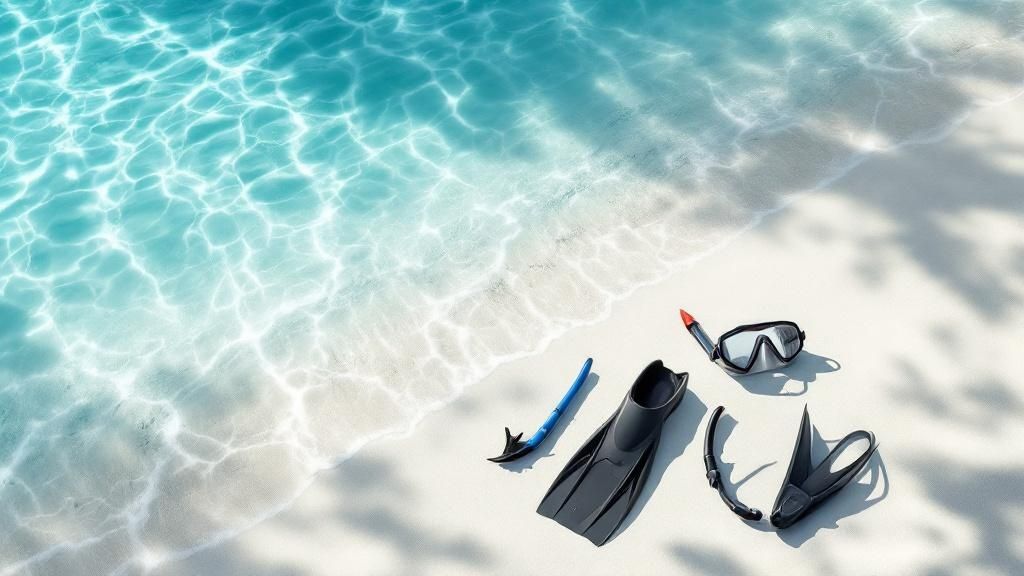
Think of your preparation as the key that unlocks the best possible underwater show. The difference between a fantastic day and a frustrating one often comes down to a few small things you do before you even get on the boat. A successful Captain Cook snorkel tour is all about feeling comfortable and confident, and that starts with the right gear and mindset.
Most tour operators, including our team here at Kona Snorkel Trips, provide all the necessary equipment: a quality mask, snorkel, and fins. But the secret isn't just having the gear; it's knowing how to use it. A common mistake is pulling your mask strap too tight, which surprisingly can make it leak more. The trick is to find a mask that creates a gentle, natural seal on your face. A good fit means less time fiddling and more time watching the colorful fish swim by.
What to Bring for a Perfect Day
While we handle the snorkeling essentials, packing a few personal items will make your day much more enjoyable. Think of your day bag as your personal comfort kit.
- Sun Protection: The Hawaiian sun is powerful, especially when it reflects off the water's surface. Be sure to pack reef-safe sunscreen, a wide-brimmed hat, sunglasses, and a long-sleeved rash guard. A rash guard is an excellent choice as it protects your skin without washing harmful chemicals onto the fragile coral.
- Seasickness Remedies: If you know you're prone to motion sickness, taking medication before we depart is a smart move. Natural alternatives like ginger chews or acupressure wristbands can also work well for many people.
- Towel and a Change of Clothes: It’s a simple thing, but having a dry towel and clothes for the ride back to the harbor is a game-changer for comfort.
Tailoring Your Approach to Your Skill Level
How you prepare can depend on your experience in the water. If you're a first-time snorkeler, the most important thing you can do is talk to your guides. Let us know you're new! We are here to help you get a perfect mask fit and can provide flotation devices like noodles or vests to give you extra support and confidence in the water. For more answers to common concerns, check out our guide on frequently asked questions about Kona snorkel tours.
For more experienced snorkelers, preparation is about fine-tuning your experience. You might prefer to bring your own trusted mask for that guaranteed perfect fit or pack an underwater camera to capture the incredible marine life. Whatever your skill level, showing up prepared allows you to relax and fully appreciate the magic of Kealakekua Bay.
Staying Safe While Exploring Ocean Paradise
The ocean is a beautiful and powerful place, and the first rule for any snorkeler is to respect its natural rhythms. Think of it like this: if you were exploring a new city, you'd want to understand the local customs and how to get around. Ocean safety is similar—once you grasp the basics of waves, currents, and weather, you can explore the underwater world with much more confidence. While Kealakekua Bay is known for its calm waters, knowing how to read these environmental signs is crucial for a fun and secure captain cook snorkel tour. Our lifeguard-certified guides are experts, but having this knowledge yourself makes the experience even better.
Our boat captains are skilled at selecting the safest spot to anchor, and understanding their choices is part of the adventure. We always look for areas protected from wind and the larger swells of the open ocean. A calm surface isn't just more comfortable; it means clearer water for viewing and an easier, more relaxing swim.
The Buddy System and Boat Awareness
The golden rule of any water activity is simple but critical: never snorkel alone. The buddy system is your most reliable safety measure. It ensures there's always someone looking out for you, whether you get a cramp, have an issue with your gear, or just need a hand. We always encourage our guests to pair up and keep an eye on their partner throughout the tour.
It’s just as important to know your way back to the boat. Before anyone even touches the water, our crew gives a thorough safety briefing. This covers essential points like:
- The proper way to use the boat ladder.
- How to spot our boat from a distance in the water.
- Simple hand signals for "I'm okay" or "I need help."
Paying close attention during this briefing is key. When you know these procedures by heart, you can fully relax and immerse yourself in the incredible marine world below, knowing that help is always just a hand signal away.
Reading the Water and Weather
Being aware of your surroundings is essential for a safe day on the water. The currents in Kealakekua Bay are generally mild, but conditions can always shift. If you ever feel a current pulling you, the best response is to swim across it (perpendicularly), not directly against it. This helps you exit the flow with the least amount of effort. Weather is another factor to watch. The Kona coast is famous for its sunshine, but a sudden change is always possible. For a deeper look into trip planning, you can learn more about the best time to snorkel on the Big Island in our detailed guide. A quick check of the forecast ensures your adventure is as safe as it is breathtaking.
Making The Most Of Your Captain Cook Experience
Turning a great captain cook snorkel tour into a truly unforgettable memory often comes down to a few insider tips. Think of it as getting a behind-the-scenes pass to Kealakekua Bay. It’s not just about jumping into the water; it’s about understanding how to spot the best marine life, take incredible photos, and truly connect with the environment. By thinking like a seasoned snorkeler, you can elevate your entire adventure.
One of the best things you can do is talk to your guide. They aren’t just operating the boat; they are your key to the bay’s most amazing secrets. Don't be shy—ask them questions like, "Where can we find the healthiest coral?" or "Is there a special spot where sea turtles like to hang out?" Their local knowledge is priceless and can lead you to quiet underwater corners that most people miss entirely.
Timing And Positioning For Better Wildlife Encounters
A big part of having an amazing experience is knowing when and where to look. The activity on the reef changes throughout the day. For example, many colorful fish are most active during the bright, mid-day hours when sunlight floods the coral. Arriving early might also give you a chance to see spinner dolphins before they move on for their daily rest.
When it comes to underwater photography, your position is everything. Here are a few simple tips to get better shots:
- Stay Shallow: The best light and most brilliant colors are typically found in water less than 15 feet deep.
- Approach Slowly: Move gently and predictably so you don’t spook the fish. Give them a moment to get used to you being there.
- Shoot Upwards: Aiming your camera slightly toward the surface can create beautiful lighting effects with a stunning blue backdrop.
Extending Your Experience Beyond The Water
The magic of this part of the island doesn't end at the water's edge. After your tour, consider exploring the South Kona area to deepen your connection to the place. You can visit nearby cultural treasures like the Pu'uhonua o Hōnaunau National Historical Park, a beautifully preserved ancient Hawaiian place of refuge.
Supporting local businesses is another fantastic way to extend your experience. Stop by a local café in Captain Cook town to enjoy authentic island food. Many of these businesses are also involved in local conservation. By choosing to support them, you're helping to ensure Kealakekua Bay remains a vibrant paradise for future generations, turning your visit into a positive impact on the community.
Ready to create your own lasting memories in Kealakekua Bay? At Kona Snorkel Trips, our lifeguard-certified guides are experts at showing you the very best of this historic and lively marine sanctuary. Book your small-group tour today and discover the difference that personalized attention makes.
